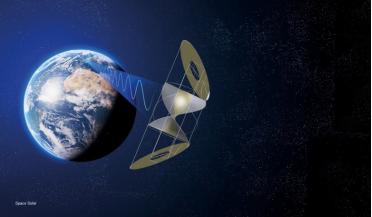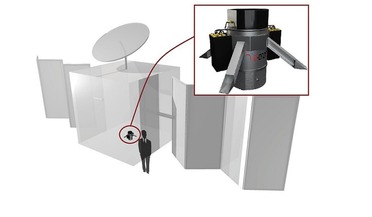 October 2023
Remote sensing by satellite - People’s Republic of China
October 2023
Remote sensing by satellite - People’s Republic of China
...). Tongxin Jishu Shiyan Weixing (TJS) TJS is a series of Chinese satellites that have been deployed in geostationary orbit since 2015 and presented by Chinese authorities as telecommunications satellites. Specific features have not been published and...
 April 2024
Unlocking the NewSpace economy through space-based solar power
April 2024
Unlocking the NewSpace economy through space-based solar power
... 40 percent of terrestrial solar and eight percent of offshore wind. It is also important to note that any single SPS in a geostationary orbit can see a quarter of the globe and in an instant can move its beam from one location to another...
 April 2024
The promise of solar energy for sustainable development and space exploration
April 2024
The promise of solar energy for sustainable development and space exploration
... locations. Space-based solar power involves transforming solar power into electricity via photovoltaic cells in geostationary orbit around Earth. The power is then transmitted wirelessly in the form of microwaves at 2.45 GHz to dedicated receiver...
 18 October 2019
Companies unite to reject SpaceX satellite plans
18 October 2019
Companies unite to reject SpaceX satellite plans
... Commission defer consideration of SpaceX’s intention to modify its license for a Ku/Ka-band non-geostationary orbit as “SES entities operate both NGSO and geostationary orbit (“GSO”) FSS networks that use these bands.” Not only is that a problem say...
 March 2015
On-orbit satellite servicing, insurance and lessons of Palapa B2 and Westar 6
March 2015
On-orbit satellite servicing, insurance and lessons of Palapa B2 and Westar 6
... all insurers and satellite owners, with more than 200 dead satellites in geostationary orbit. Of even greater concern for operators with assets in lower Earth orbits is the additional threat of collision from thousands of launch vehicle spent parts...
 October 2015
Down to Earth: how to deorbit satellites and save money
October 2015
Down to Earth: how to deorbit satellites and save money
... that prevents it being controlled from the ground. This has great value in different situations. In the case of geostationary orbit, where narrow slots are assigned to operators, a satellite has to be removed in order to make way for the newer...